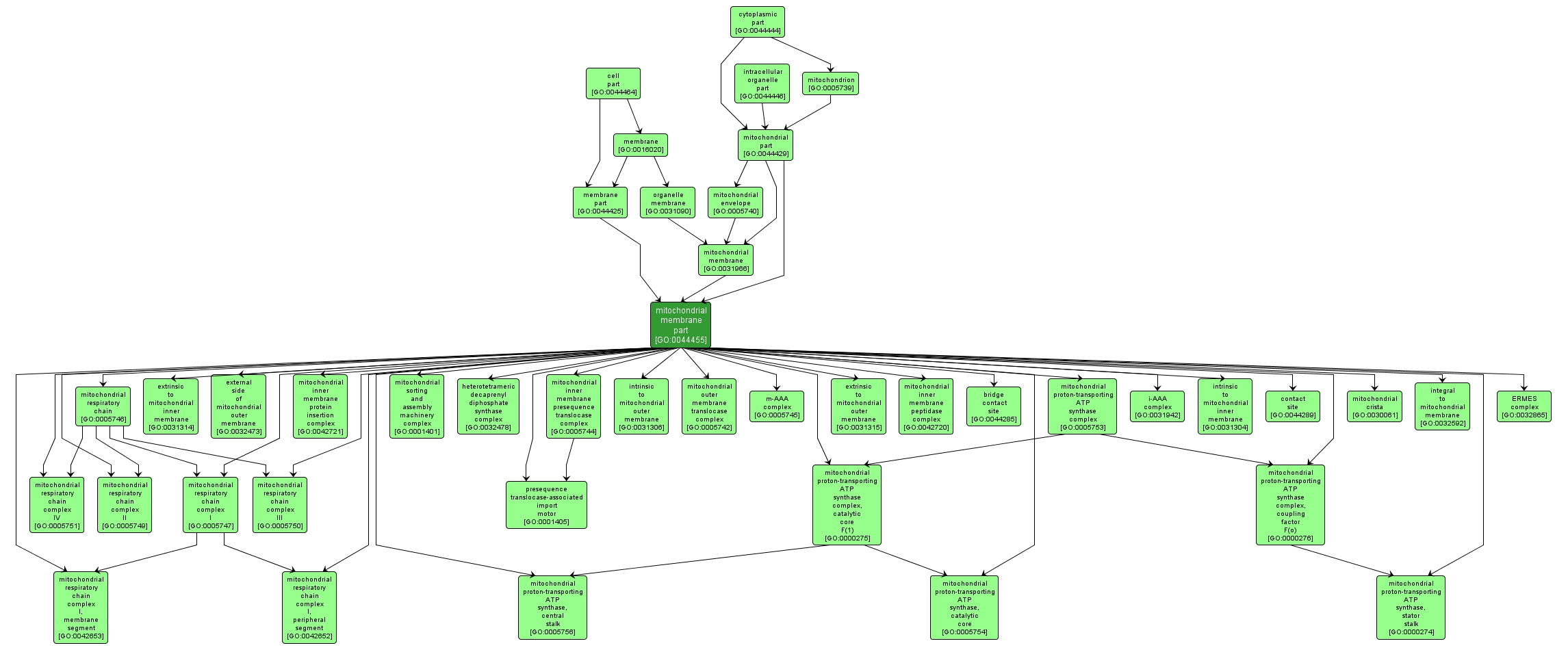GO TERM SUMMARY
|
| Name: |
mitochondrial membrane part |
| Acc: |
GO:0044455 |
| Aspect: |
Cellular Component |
| Desc: |
Any constituent part of a mitochondrial membrane, either of the lipid bilayers that surround the mitochondrion and form the mitochondrial envelope. |
|

|
INTERACTIVE GO GRAPH
|














